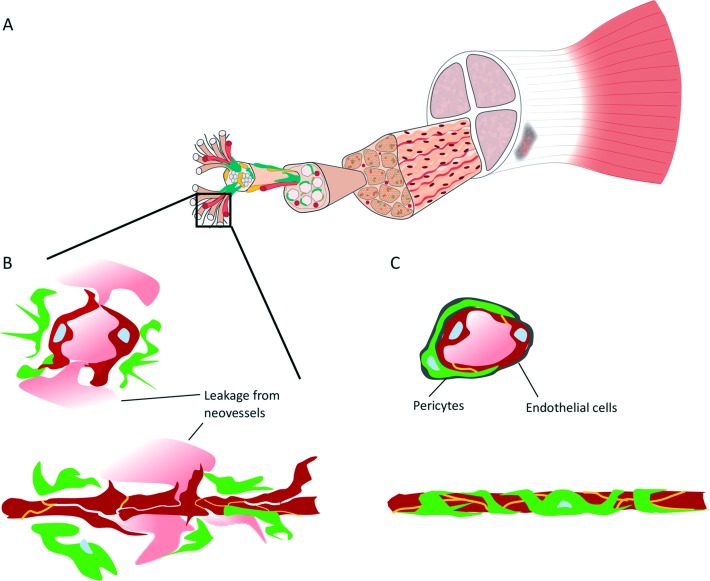Figure 1.
Stabilisation of neovessels in tendinopathy. (A) Tendons respond to hypoxia by secreting angiogenic growth factors that induce the growth of neovessels in tendinopathy. (B) These neovessels are hyperpermeable2; they leak and do not have proper perfusion, failing to deliver oxygen and nutrients required for tissue regeneration. Fibrin-rich exudates leak from the neovessels, which results in fibrinoid degeneration, a typical feature of tendinosis in tendinopathy.2 (C) Future therapies should aim to ‘stabilise’ the neovessels, re-establishing the structural integrity of the vessel walls (lumenisation) and consequently enabling proper perfusion that replenishes supply of oxygen and nutrients. Picture adapted with permission from Taylor and Francis Group.9

